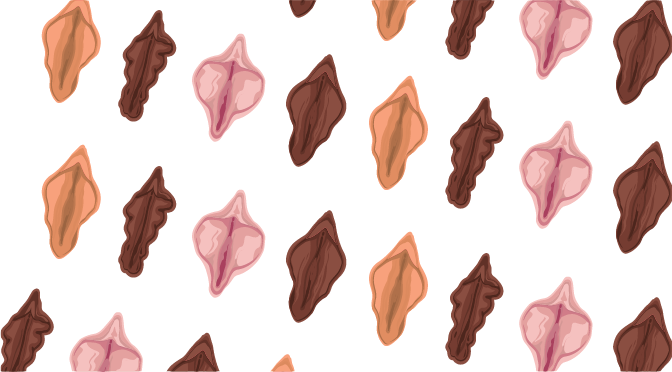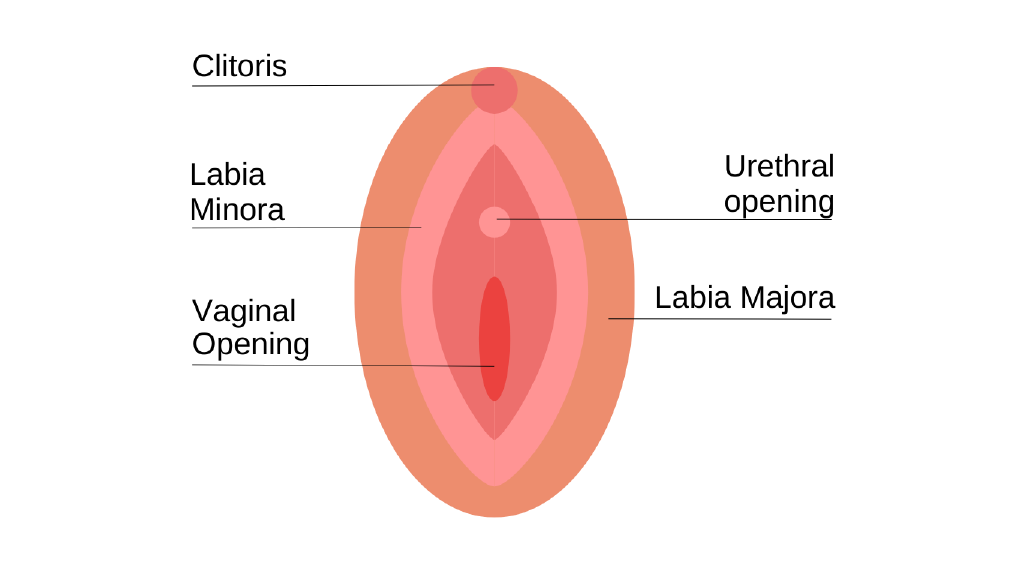The Vulva

The vagina is the passage inside the body that connects the uterus (or womb) to the outside of your body. You bleed through your vagina during your period. The vagina is also the passage through which a baby is born. Vulva is the name for the genitals on the outside of your body.
The vulva includes:

Like every other body part, every vagina is different; they come in many different shapes and sizes and this is perfectly normal. The best thing to do is to get to know your vagina:
It can be difficult to know what a normal vulva looks like if you don’t see a lot of them. But your vulva – just like your breasts – is a size, shape, and colour of its own. How a vulva looks varies from woman to woman.
Some women worry that their labia (or genital ‘lips’) are too long or uneven. But again, just like breasts, the length of our labia can vary and isn’t always symmetrical.
The main thing is to know what is normal for you and look out for any changes e.g. a lump, a change of smell, painful sores etc. If you’re worried or you notice any changes in the appearance of you vulva, you should talk to your doctor about it.
Discharge (fluid from your vagina) is normal. Your body makes these fluids to keep your vagina clean and moisturised. Normal vaginal discharge is usually white, cream-coloured, or transparent and does not have a strong smell.
It’s also normal for the amount, colour, and texture of this discharge to change throughout your menstrual cycle. It often becomes clearer and thinner in the weeks after your period and thicker and stickier after ovulation. You may have more discharge during pregnancy, if you are on the contraceptive pill or if you are sexually aroused. However, a change in discharge can also be a sign of an infection. Things to look out for include a change in the colour, smell, consistency, or quantity of discharge. These symptoms can be caused by an STI such as Chlamydia or Gonorrhoea. Testing for these infections is easily available from sexual health clinics.
Discharge can also be a symptom of a non-sexually transmitted infection such as Thrush or Bacterial Vaginosis. Consult with your doctor if you suspect you have any type of infection.
The female reproductive system includes internal and external organs. The internal organs are located in the pelvic area and include the uterus, two ovaries, two fallopian tubes, a cervix and vagina. The external organs include the vaginal entrance, urethral opening, clitoris, labia minora (inner lips) and labia majora (outer lips) - this is known as the vulva.
Why not watch our back to basics clip to find out more.